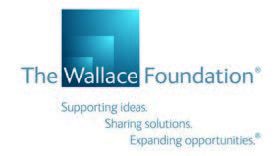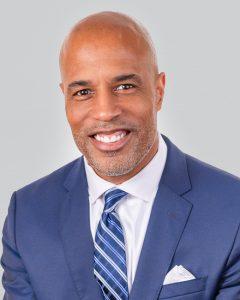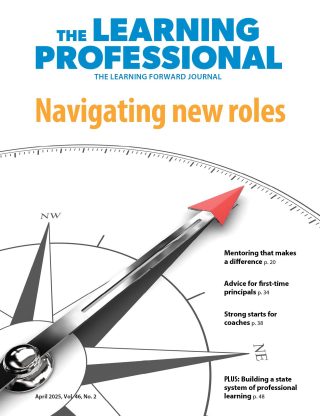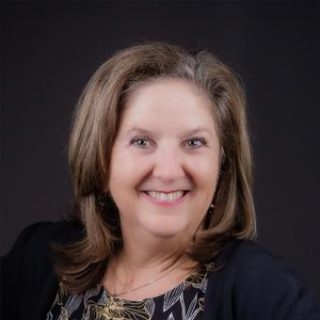IDEAS
Learning to lead
Districts collaborate to strengthen principal practices
By Kay Psencik and Frederick Brown
June 2018
Vol. 38 No. 3
The role of the principal is a complex one. How well principals play that role matters to the success of the students and teachers they serve.
Since Roland Barth (1984) succinctly noted that “the quality of a school is related to the quality of its leadership” (p. 93), research has confirmed that principals have a positive impact on school improvement, the quality of teaching, and student learning, especially in high-needs schools (Bryk, Sebring, Allensworth, Luppescu, & Easton, 2010; Hallinger & Heck, 1998; Leithwood, Louis, Anderson, & Wahlstrom, 2004).
In many districts focused on improving teaching and learning, the teacher professional learning community is an essential professional learning model to engage teachers in increasing their effectiveness. For members to focus on their own learning so they can improve student learning, they need the support of a strong school leader who understands how collaborative professional learning can lead to improved teaching practice and student learning.
Teachers who learn and work collaboratively need school leaders who can model learning, share leadership for learning, and facilitate cycles of continuous improvement to strengthen teaching and learning. More than instructional leaders, they need learning leaders.
PARTNERS IN LEARNING
Across the country, district and county leaders are convening principals in professional learning communities to help them develop as learning leaders. For more than a decade — and recently with support from AMEX Principals Path to Leadership, Houston Endowment Galveston County Learning Leaders, The Wallace Foundation, and Twin Tiers Coalition for Learning — Learning Forward has engaged with some of these district-level leaders as learning partners. In initiatives from Avondale, Arizona, to Hillsborough, Florida, and Gwinnett County, Georgia; Fort Wayne Community Schools, Indiana, to Corning, New York; and down to Galveston County, Texas, our partners have taught us what learning leaders do.
We have facilitated and observed those district and county leaders with their external partners and participating school leaders.
We have seen them develop the skills, competence, and confidence to lead learning that positively affects teacher practices and student achievement.
This article describes a learning partnership between district or county leaders and school leaders to create a system of principal professional learning that came to life in principal learning communities across a district or multiple-district region.
WHAT IS THIS PARTNERSHIP FOR LEARNING?
Learning leaders partners’ efforts focus not only on improving support for principals, but also on changing the role of district and county leaders. District and school leaders have shifted their relationship from compliance to collaborative learning.
As the graphic above depicts, the district-principal relationship almost becomes lateral when district and school leaders work together to set common goals, learn new skills, and coach one another. They move closer to sharing a vision of themselves as a learning community and developing collective responsibility for the success of all learners.
While working with our partners, we observed great diversity of ideas and varying degrees of successful implementation.
The learning cycle drives continuous interactions between district and school leaders as district leaders clarify expectations with school leaders, who then share feedback about the value of district support and supervision. While addressing schoolwide problems of practice, school leaders exchange information with their principal communities about their learning with others and how that learning impacts their school leadership. Over time, this partnership grows into a community of leaders.
The following assumptions undergird our observations of this partnership and framework of a system focused on principal professional learning communities, as portrayed in the graphic:
District and school leaders share responsibility for principal professional learning.
District leaders foster a culture of learning and create conditions that nurture principal professional learning communities.
District leaders articulate expectations for which they hold themselves and all principals accountable.
As principals focus their learning community efforts on a common problem of practice, they take responsibility for their own learning and that of their peers.
As district leaders develop their skills in leading and facilitating principal professional learning, they model how to effectively complete a cycle of continuous improvement.
District leaders and principals use data to engage with intention and precision in a short cycle of continuous improvement, monitor the impact of their learning, and modify their learning agendas.
These leaders value and engage in effective feedback and coaching processes.
They regularly assess the impact of professional learning on leadership and teaching practices.
Within principal learning communities, members continuously share information to modify plans and adjust professional learning.
When external expertise is needed, district and school leaders form essential partnerships.
While working with our partners, we observed great diversity of ideas and varying degrees of successful implementation. We also documented common elements of support across dissimilar sites that were similarly focused on supporting and sustaining principals.
ELEMENTS OF SUPPORT
- Create conditions for learning.
Effective district leaders create conditions in which schools can function as learning systems that encourage and retain educators who can achieve district learning goals. District leaders and principals share an obligation to learn every day and a moral imperative to ensure that everyone learns with them.
Principals can best lead student and staff learning in their schools if district leaders invest in their own and principals’ learning by creating a system of principal professional learning. Accordingly, district leaders align the work of principal supervisors with the Model Principal Supervisor Professional Standards (Council of Chief State School Officers, 2015). To learn how to lead learning organizations, principals need exposure to models of effective leadership, opportunities to collaborate with other principals, and ongoing coaching and support, all of which are addressed in the Model Principal Supervisor Professional Standards.
While designing models to support the principal’s role in leading learning, district leaders also think about models that strengthen their own role — especially that of principal supervisors — in facilitating principal learning.
According to a study conducted by the Council of the Great City Schools (Corcoran et al., 2013), a key attribute of successful districts is that leaders match skilled supervisors to the needs of schools, which may include helping principals meet new expectations for instructional improvement.
Principal supervisors accept that their primary responsibility is facilitating principal learning. To do so, they develop deep understanding of expectations for their performance in the Model Principal Supervisor Professional Standards, the Standards for Professional Learning (Learning Forward, 2011), and the cycle of continuous improvement.
Most importantly, effective supervisors hold themselves and their principals accountable for their schools’ progress. They host regular conversations with principals about student and staff learning data, analyze that information together, and regularly modify the work and professional learning plans (Corcoran et al., 2013).
Friendswood (Texas) Independent School District educators were initial members of the Galveston County Learning Leaders project, funded by the Houston Endowment. Although they valued professional learning, district leaders were skeptical at first about the value of collaborative learning among multiple districts in the county.
Instead, they believed they would spend their time writing a district professional learning plan that clarified required courses for all teachers and support staff. They struggled to develop a vision of themselves as learners. After they understood the Standards for Professional Learning, they began to see professional learning in new ways and, through that lens, they could also see themselves as model learners.
They began to engage with commitment and passion: They created multiple learning systems in which all principals and teachers engaged in a cycle of continuous improvement. They developed collaborative professional learning for principals. They built a teacher leadership process that strengthened learning communities in all schools. As district leaders and principals learned together, learning became the norm.
- Take a systemic approach to learning.
Rebuilding systems can be tough because existing practices are so strongly in place that most district teams find them hard to change. The curriculum design in a school and its schedule, for example, are more often controlled by the bus schedule than the learning agenda. Such deeply embedded systems and structures often keep school leaders from seeing new ways or finding new options.
Yet, as Paul Manna (2015) pointed out, principals have the power to be “multipliers of effective teaching” (p. 7). In our experience, learning leaders achieve this effect by creating a culture of continuous improvement and valuing systemic — and systematic — professional learning for themselves and others.
Because they understand the link between professional learning and student achievement, they design adult learning based on the Standards for Professional Learning (Learning Forward, 2011). And when they engage all teachers in the organization in a cycle of continuous improvement, they make sure that ongoing data analysis, feedback, monitoring, and adjustments add precision to their assessment of the impact of professional learning on practices of the adults in their schools — and help them keep their eyes on the learning in that school and in the district.
For several years, Fort Wayne (Indiana) Community Schools has committed to becoming a learning system. After articulating a clear definition of leadership in the district, the superintendent and leadership team members focused on principal professional learning.
They examined their meetings with principals and transformed all principal meetings with the superintendent into professional learning sessions that expand the essential work of the district. Together, district and school leaders identified school-based curriculum, assessment, and instruction as the central work of school learning teams.
Based on their own learning needs and the curriculum direction of the district, principals in learning communities established a problem of practice to learn how to increase their effectiveness in leading curriculum efforts at their respective schools. Some may increase their understanding of effective mathematics instructional practices while others deepen their own learning in teaching English language arts.
Since intentionally focusing professional learning on their curriculum goals, principals and instructional coaches report they have strengthened their skills in facilitating teacher teams. They also are deepening their understanding of the standards students are expected to meet.
- Engage in principal professional learning communities.
Probably the most significant element in principal professional learning is that effective principal supervisors purposefully design and facilitate professional learning communities for all principals (Honig & Rainey, 2014).
These administrators shift their roles to “fundamentally remake their work practices and their relationships with schools to support teaching and learning improvements for all schools” (Honig & Rainey, 2014, p. iv). As communities evolve, a new relationship develops between district and school leaders — one of shared responsibility, collaboration, and support.
Trust flourishes in communities when people work together on authentic problems. As principals engage in their problems of practice, they learn from one another and develop collective responsibility for the success of all schools in the district.
A Clear Creek (Texas) ISD principal told us, “Being in a principal community of practice has connected me more deeply with elementary and intermediate principals. … I have a larger perspective of effective leadership as a result.”
Such a sense of collective responsibility levels the playing field for students, regardless of the school they attend, and moves the district toward greater equity.
In Clear Creek ISD, Galveston County Learning Leaders members formed principal professional learning communities to address the district strategic plan. As members of the community, district leaders had been studying systems of learning essential for high-performing districts. They began to rethink their own roles in leading and facilitating professional learning and to question their processes for principal learning.
The district leadership team created a system that engaged principals in assessing their own skills in leading learning communities. Drawing on results of the self-assessments, district leaders formed principal professional learning communities across the district. The communities established their own learning goals related to their problems of practice and set their own learning agendas.
Some chose to focus their work with teachers on using ongoing assessment to determine whether students perceived that learning was personalized to them. Others examined new instructional approaches toward personalized learning, a primary focus on the strategic plan. All engaged in completing cycles of continuous improvement.
The district leadership team is now focused on how it will assess the impact of this work on principal learning and student outcomes.
- Focus on a problem of practice through a complete cycle of continuous improvement.
One challenge is focusing the learning community on significant work long enough to determine impact. Principal learning communities may identify problems of practice that emerge from issues in the school that create barriers to adult learning: What are some of the most effective ways to increase the time teachers have together to engage in a cycle of continuous improvement? In what ways can we best design learning for our mathematics team to increase its effective use of discourse in working with students? What are the best strategies for strengthening the relationship between instructional coaches and teaching teams?
Such issues may be generated from years of a culture that holds low expectations for students or stifles collaborative learning. As principal communities uncover their issues, members focus their professional learning on a common problem of practice that they address with staff members in their respective schools.
Even when they commit to resolving critical problems of practice, district leaders often juggle a continuous launch of initiatives. Leaders in one of our partner districts, for example, launched new English language arts and mathematics curricula, a new learning management system, and new assessment plan; initiated efforts for restorative practices; and addressed a new set of science standards.
When district leaders find themselves churning in permanent white water, they feel they have no time to engage in a cycle of continuous improvement. Yet we know that if participants do not complete the cycle regularly, they are unable to monitor the impact of their work. When they do begin to make changes needed for effective implementation of any initiative, they may abandon the effort, deeming it a failure — all because they never completed a cycle of continuous improvement.
Members of the principal community can keep one another in the cycle by using change management tools to check the focus of the problem of practice; reviewing agreements about the problems of practice — perhaps they commit to completing fewer cycles; checking that they can access skilled facilitation; and ensuring that they can engage all members equitably and substantively (Hirsh & Crow, 2018). These strategies may help communities reduce stress and restore focus so they can complete a cycle.
- Assess impact.
One of the most challenging aspects of the cycle of continuous improvement is assessing the impact of professional learning: How do we know that what we are learning makes a difference to those we serve? How do we know whether our principals are learning what is essential for them to drive positive shifts in teaching and learning in their schools? How do we know whether teachers’ changes in practice positively affect student learning?
Middle school principals in Galveston (Texas) ISD tackled assessment of impact as their problem of practice. They had worked for many years to implement professional learning communities that would increase their effectiveness in teaching mathematics. But they had no responses to questions such as, “Are teachers effectively using the curriculum materials they were developing? Are they engaging in learning communities in ways that support each other through implementation?”
As a group, they decided to create an Innovation Configuration (IC) map to measure what was happening in schools. They adapted Learning Forward’s IC map for teachers to the practices they expected to see when teachers were developing, revising, or working with the curriculum in classrooms.
After analyzing their findings, principals began to change how they worked with teachers on math curriculum. They also studied The Coach’s Craft: Powerful Practices to Support School Leaders(Psencik, 2011) and strengthened their coaching skills by practicing strategies recommended in the book. They identified coaching as one of the most effective strategies they could use to reflect on what they learned about their teaching teams.
Throughout the coming school year, principals will use the IC maps regularly to assess their growth as leaders of professional learning and teachers’ growth in content and instruction. After completing data analysis and interpretation, they will decide on the design of 2019 summer work.
EMERGING LEARNINGS
We have studied how our partner districts and organizational leaders facilitate and support principal learning communities. As they began to view themselves as companion learners with common goals, we saw district leaders shift from top-down to a collegial relationship.
We also identified changed leadership practices that affected their roles in teaching and learning. Now, district leaders listen deeply to each other and principals. They coach more often than they issue directives. They use their time with principals in high-quality professional learning rather than an information briefing. Other key observations include:
When district leaders and principals learn together, they strengthen leadership and extend coherence throughout the district.
As district leaders and principals engage substantively in professional learning communities, they develop essential skills and competencies to lead high-performing schools.
As district leaders and principals learn from one another, they develop trusting relationships, which they leverage to resolve problems and implement solutions.
As district and school leaders accept that they form the district’s leadership core and thus share responsibility for the success of all learners, they seize the greatest opportunity for achieving the goals they all want to achieve.
ACCELERATE THE LEARNING
Principals have always viewed themselves as learners, and most have sought their own learning experiences. We believe, however, that a district’s or central organization’s systematic, purposeful approach to principal learning accelerates the learning of all.
As we deepen our understanding of such relationships, we will continue to explore how we can best support learning leaders. We clarify these ideas, models, and systems for learning in a forthcoming book published by Learning Forward, Becoming Learning Principals,which discusses a district system encompassing a continuum of principal professional learning and support.
Effective principal professional learning is central to the nature and effectiveness of teacher learning. When principals participate in a learning community and value the shared learning, they experience the power of this work for their teachers. When principals learn, teachers learn. And when teachers learn and improve their instruction, students benefit.
This article is sponsoored by the Wallace Foundation

References
Barth, R. (1984).The professional development of principals. Educational Leadership, 42(2), 93-94.
Bryk, A.S., Sebring, P.B., Allensworth, E., Luppescu, S., & Easton, J.Q. (2010).Organizing schools for improvement: Lessons from Chicago.Chicago, IL: University of Chicago Press.
Corcoran, A., Casserly, M., Price-Baugh, R., Walston, D., Hall, R., & Simon, C. (2013).Rethinking leadership: The changing role of principal supervisors.Washington, DC: Council of the Great City Schools.
Council of Chief State School Officers. (2015).Model Principal Supervisor Professional Standards 2015.Washington, DC: Author.
Hallinger, P. & Heck, R. (1998). Exploring the principal’s contribution to school effectiveness: 1980-1995. School Effectiveness and School Improvement, 9(2), 157-191.
Hirsh, S. & Crow, T. (2018). Becoming a learning team: A guide to a teacher-led cycle of continuous improvement (2nd ed.). Oxford, OH: Learning Forward.
Honig, M.I. & Rainey, L.R. (2014). Central office leadership in principal professional learning communities: The practice beneath the policy.Teachers College Record, 116(4), 1-48.
Learning Forward. (2011). Standards for Professional Learning. Oxford, OH: Author.
Leithwood, K., Louis, K.S., Anderson, S., & Wahlstrom, K. (2004). How leadership influences student learning. New York, NY: The Wallace Foundation.
Manna, P. (2015). Developing excellent school principals to advance teaching and learning: Considerations for state policy. New York, NY: The Wallace Foundation.
Psencik, K. (2011). The coach’s craft: Powerful practices to support school leaders.Oxford, OH: Learning Forward.

Frederick Brown is Learning Forward’s president | CEO. Fred is an education visionary who knows firsthand that our nation’s schools need transformational change if we are to meet the challenges of the next decades. Fred advocates that every child deserves to reach their highest potential and every educator must have the opportunity to participate in exemplary, ongoing, professional learning programs to provide students the skills needed to meet their unique needs.
Supporting educators at all levels and improving student achievement are through lines of Fred's career. An elementary school teacher, a middle school assistant principal, and school principal, Fred saw firsthand the impact high-leverage instructional practices and school culture have on school success.
Fred is a frequent speaker on leadership and building high-quality learning in schools. He has co-authored two books that have made significant contributions to the field of education, demonstrating how a comprehensive approach to professional learning can be achieved so that everyone in a system is a learner, and how principals apply a learning lens to their many critical responsibilities to create a productive climate for learning and collaboration. "Becoming a Learning System" and "The Learning Principal -- Becoming a Learning Leader" are time-tested Learning Forward resources for schools and leaders.
Recent Issues
LEARNING DESIGNS
February 2025
How we learn influences what we learn. This issue shares essential...
BUILDING BRIDGES
December 2024
Students benefit when educators bridge the continuum of professional...
CURRICULUM-BASED PROFESSIONAL LEARNING
October 2024
High-quality curriculum requires skilled educators to put it into...
LEARNING TO PIVOT
August 2024
Sometimes new information and situations call for major change. This issue...













